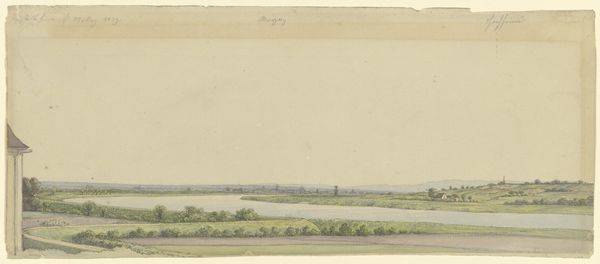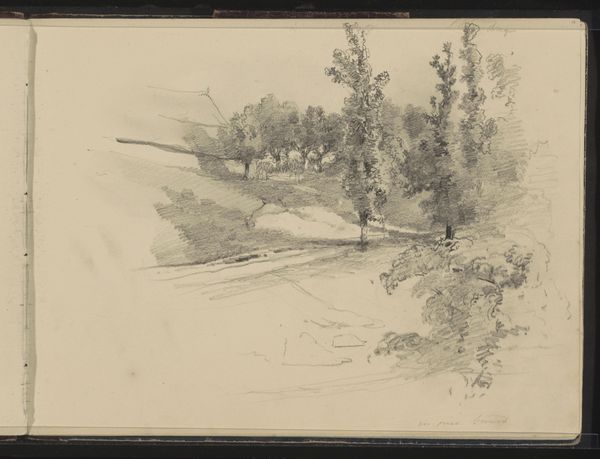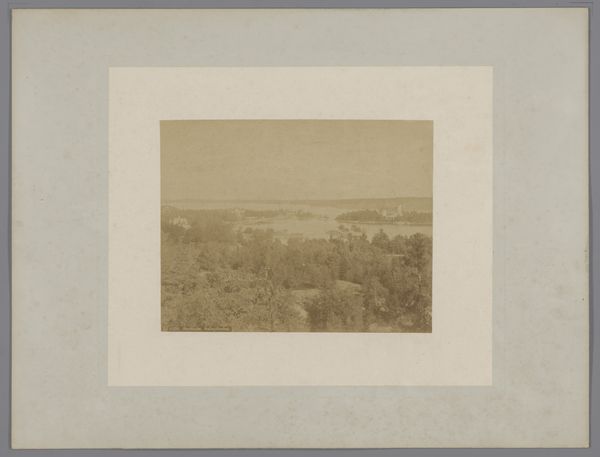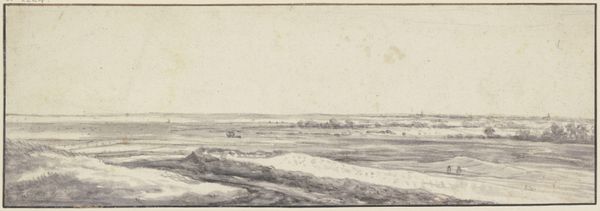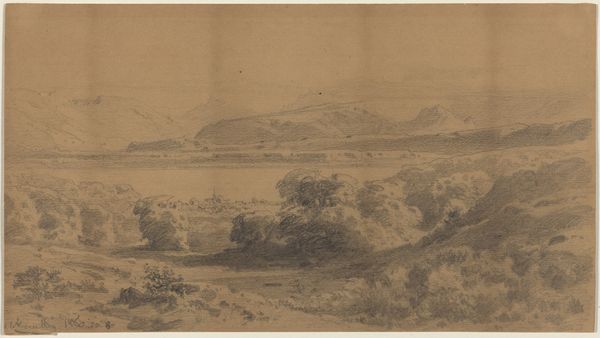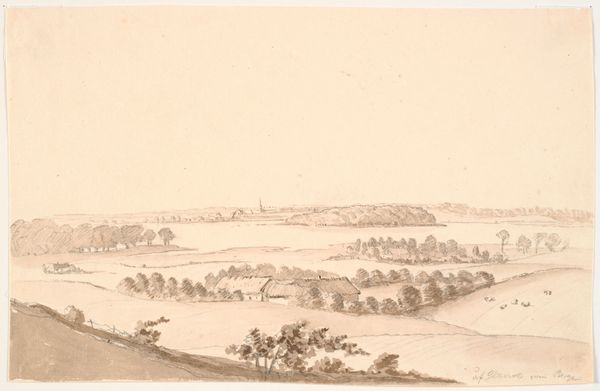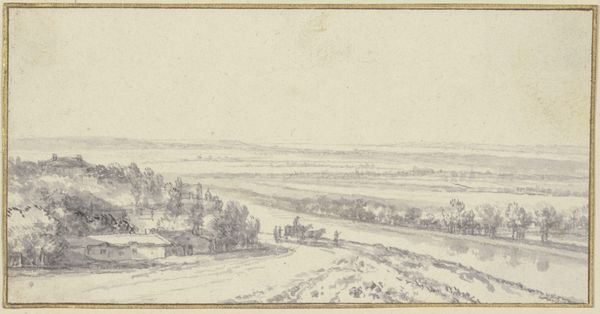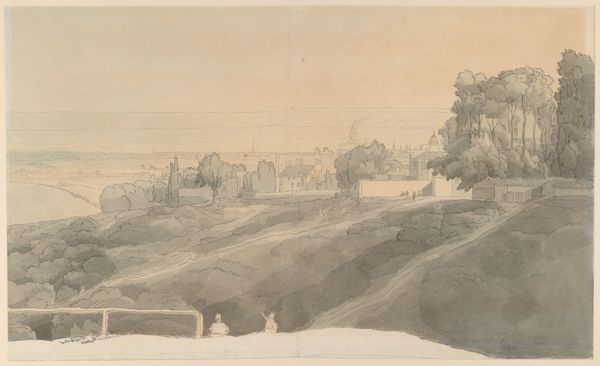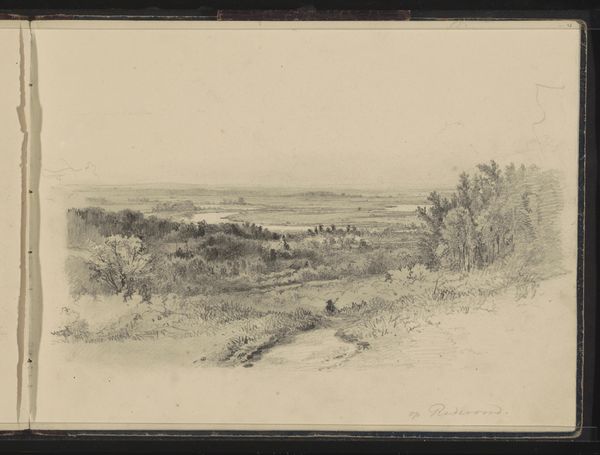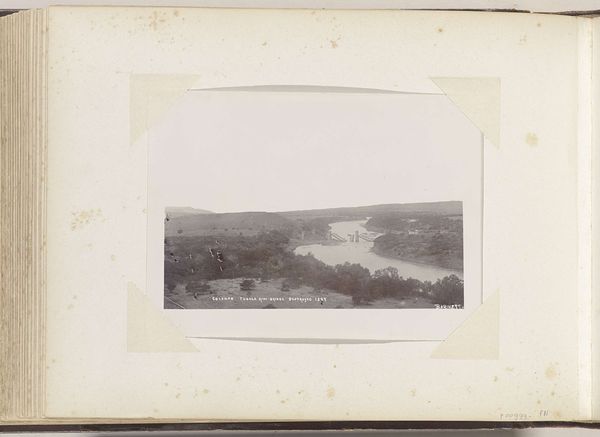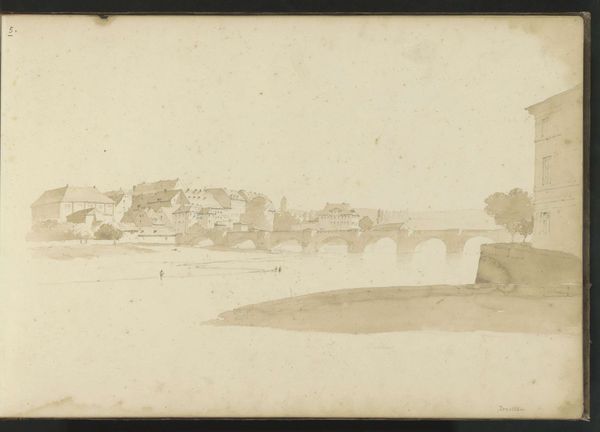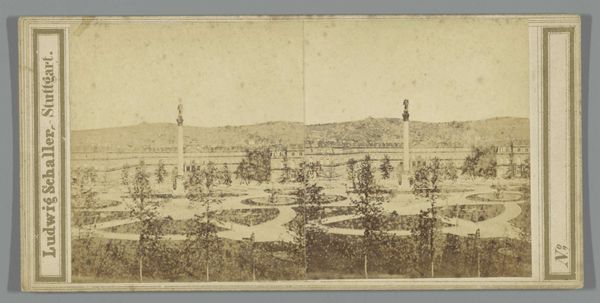
Landscape with a view of Dedham Vale seen from Langham 1776 - 1837
0:00
0:00
drawing, pencil
#
pencil drawn
#
drawing
#
pencil sketch
#
landscape
#
charcoal drawing
#
romanticism
#
pencil
Dimensions: 321 mm (height) x 668 mm (width) (bladmaal)
Curator: This is John Constable’s "Landscape with a view of Dedham Vale seen from Langham", thought to have been produced sometime between 1776 and 1837. It’s currently housed at the SMK, the Statens Museum for Kunst. Editor: Immediately, I notice the materiality. It's a pencil sketch, delicate yet deliberate. The layers of graphite build up a sense of depth. The whole scene evokes a sense of pastoral quietude. Curator: Absolutely. Consider how the Dedham Vale region served as Constable’s lifelong muse, informing not just his landscape artistry but reflecting the societal and economic transformations occurring in rural England. The changing land use, agricultural practices, and social stratification deeply influenced his Romantic portrayal of nature. Editor: Indeed, it raises questions about the production of landscape itself. Pencil sketches like these, often precursors to larger works, involved a particular kind of labor. Note how Constable renders the fields; those textures imply work, human engagement with the land and its resources. Curator: And that perspective is key because the work is rooted in his identity. Dedham Vale wasn’t just any landscape; it represented his personal history, his connection to the land, and his class identity. Constable consciously presented an ideal, subtly responding to urbanization and the increasing detachment of society from the countryside. He politicized landscape painting by emphasizing the rural at a pivotal point of urbanization. Editor: He draws our attention not just to WHAT is represented, but HOW it is represented. The tonal variations achieved simply with graphite indicate a sophisticated understanding of materials and technique. These rapid, perhaps plein air, sketches become documents of a time but also demonstrate skilled artisanal engagement. Curator: Right. It is about ownership and the way land and class are deeply woven into the landscape. It's his perspective, and that's what he chooses to show us. The Vale, for him, represented stability amid significant cultural change, subtly speaking to the anxieties of displacement during the Industrial Revolution. Editor: Examining the means of creation encourages us to see not just a romantic scene but a thoughtful meditation on the relationship between land, labor, and the artist's own practice. I am interested in its purpose within the studio economy of the time. Curator: Considering Constable’s strategic use of landscape to navigate social dynamics offers insights into how seemingly bucolic scenes can be intensely ideological and even subtly subversive. Editor: Ultimately, observing the material and process enriches our viewing. It demonstrates a skilled making process. Curator: This landscape encapsulates so much, resonating with broader conversations around belonging and the political dimensions of visual representation.
Comments
No comments
Be the first to comment and join the conversation on the ultimate creative platform.
